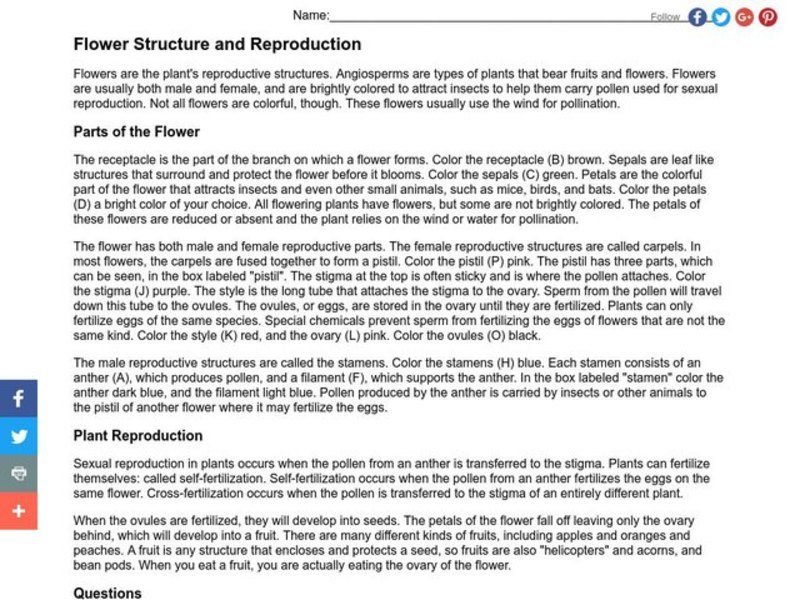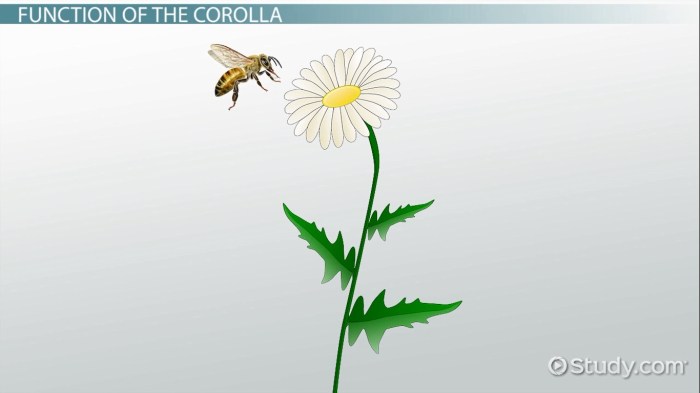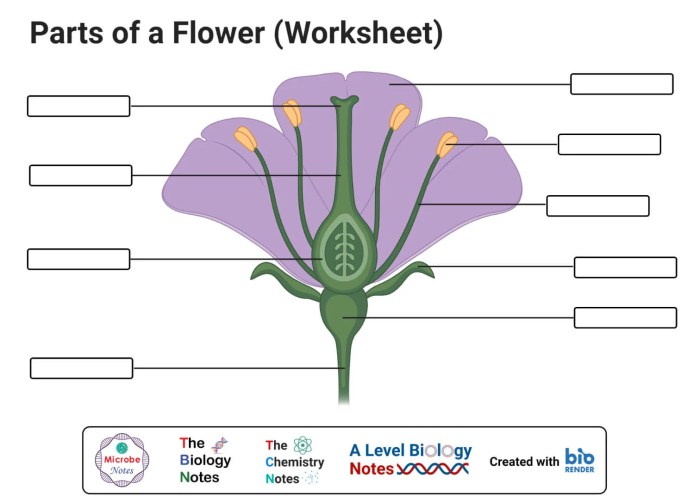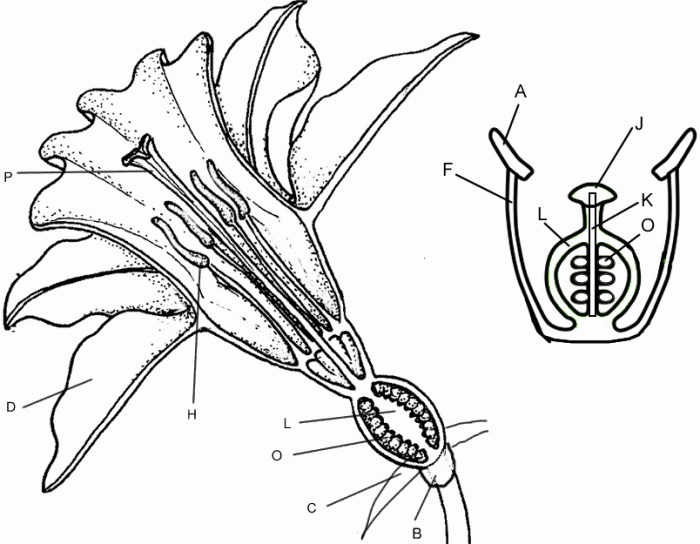Embark on an enlightening journey into the captivating world of flower structure and reproduction, where the ‘Flower Structure and Reproduction Worksheet Answers’ unveil the intricate mechanisms that govern the life cycle of these botanical wonders. Delve into the anatomy of flowers, unravel the secrets of pollination, and witness the remarkable adaptations that ensure the survival and diversity of plant life.
From the vibrant petals that attract pollinators to the intricate reproductive organs that facilitate seed production, this comprehensive guide provides a thorough understanding of the essential processes that underpin the beauty and ecological significance of flowers.
Flower Structure

Flowers are the reproductive organs of flowering plants. They are responsible for producing seeds, which allow the plant to reproduce. Flowers come in a wide variety of shapes and sizes, but they all share some basic structures.
Parts of a Flower, Flower structure and reproduction worksheet answers
- Petalsare the colorful leaves that attract pollinators. They may be different colors, shapes, and sizes, depending on the flower.
- Sepalsare the small, green leaves that surround the petals. They protect the flower bud before it opens.
- Stamensare the male reproductive organs of the flower. They produce pollen, which contains the male gametes.
- Pistilis the female reproductive organ of the flower. It contains the ovary, which contains the ovules, and the style, which leads to the stigma.
- Receptacleis the base of the flower. It supports all of the other flower parts.

Flower Reproduction

Flower reproduction begins with pollination. Pollination is the transfer of pollen from the stamen to the pistil. This can be done by insects, birds, or other animals. Once the pollen reaches the pistil, it germinates and produces a pollen tube.
The pollen tube grows down the style to the ovary, where it fertilizes the ovules.
After fertilization, the ovules develop into seeds. The seeds are then dispersed by wind, water, or animals. When a seed lands in a suitable location, it will germinate and grow into a new plant.
Methods of Seed Dispersal
- Wind dispersal: Seeds are light and have wings or other structures that allow them to be carried by the wind.
- Water dispersal: Seeds are waterproof and can float on water.
- Animal dispersal: Seeds have hooks or other structures that allow them to attach to animals.
Worksheet Answers

| Question | Answer |
|---|---|
| What are the different parts of a flower? | Petals, sepals, stamens, pistil, and receptacle. |
| What is the function of petals? | To attract pollinators. |
| What is the function of sepals? | To protect the flower bud before it opens. |
| What is the function of stamens? | To produce pollen. |
| What is the function of pistil? | To produce ovules. |
| What is the function of receptacle? | To support all of the other flower parts. |
| What is pollination? | The transfer of pollen from the stamen to the pistil. |
| What are the different methods of seed dispersal? | Wind dispersal, water dispersal, and animal dispersal. |
Additional Information: Flower Structure And Reproduction Worksheet Answers

Flowers are essential for the survival of many plants and animals. They provide food for pollinators, such as bees and butterflies. They also produce seeds, which allow plants to reproduce. In addition, flowers play an important role in the human culture and society.
They are used in art, music, and literature. They are also given as gifts and used to decorate homes and gardens.
Examples of Different Types of Flowers
- Rosesare one of the most popular flowers in the world. They come in a wide variety of colors, shapes, and sizes.
- Tulipsare another popular flower. They are known for their bright colors and long, slender stems.
- Daffodilsare a spring flower that is known for its yellow petals and trumpet-shaped center.
- Sunflowersare a large, showy flower that is known for its bright yellow petals and black center.
- Liliesare a fragrant flower that is known for its large, trumpet-shaped petals.
FAQ
What are the main parts of a flower?
The main parts of a flower include the petals, sepals, stamens, pistil, and receptacle.
How does pollination occur?
Pollination occurs when pollen grains are transferred from the male anthers to the female stigma of a flower, enabling fertilization.
What is the role of insects in pollination?
Insects play a crucial role in pollination by transferring pollen grains between flowers, facilitating fertilization and seed production.
How are seeds dispersed?
Seeds are dispersed through various methods, including wind, water, animals, and explosive mechanisms, ensuring the survival and spread of plant species.